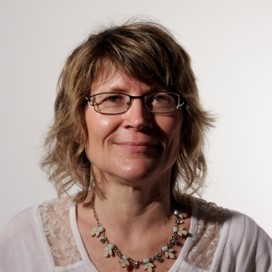Toxic Risks
Topic outline
-
Thanks to this module, you will be able to identify chemical, radiation and biotechnology hazards that have an impact on humans and the environment, and then analyze and mitigate their effect.
-
Unit 1. Nuclear Safety
Nuclear Safety aims to define and implement measures to prevent, control and mitigate accidents. Three tools are used: Defence in depth, Experience feedback and Continuous improvement.
Unit 2. From soil health to global health
Soils are complex and dynamic ecosystems, highly difficult to precisely characterize. However, due to their numerous ecosystem services, it’s crucial to develop operational tools and procedures in order to characterize, sustainably manage them, and if necessary, improve their agronomical, environmental and sanitary qualities in order to promote global health. The adequacy between soil characteristics and their uses is a crucial point.
-
Bernard FOUREST, spent 40 years long working for the main players in the French nuclear arena: Novatome (today part of ORANO), the French Atomic Energy Commission (CEA), the Radioprotection and Nuclear Safety Institute (IRSN), and lastly Electricité de France (EDF). His expertise covers plant operation as well as engineering. Throughout his career, he has established and maintained strong links with international organisations such as the International Atomic Energy Agency (IAEA) and the Nuclear Energy Agency (NEA) of the Organisation for Economic Co-operation and Development (OECD), as well as with the nuclear industry and regulators of many countries. From 2006 to 2011, he has chaired the Reactor Safety Group of ENISS, the European Nuclear Operators Association to achieve nuclear safety harmonization in Europe.
 After training as a chemical engineer and doctor in Soil Sciences, a
position as associate professor in Earth Sciences at the University of Paris VI;
Camille DUMAT is now Professor at the University of Toulouse (INP-ENSAT),
Researcher in agroecology at the DYNAFOR laboratory and attached to the Social
Sciences CERTOP “Ecological Transition Axis”. An expert on urban agriculture
issues, she is President of Réseau-Agriville. With dual expertise in Biogeochemistry and
Sociology, she develops a multi-criteria, multi-actor and multi-disciplinary
approach in the context of research and teaching aimed at ecological transition
and global health: urban agriculture, sustainable management of industrial
wastelands, greening of practices. Expert for the Ministry of Agriculture,
Research and Teaching Ministry, and Ademe. She is currently co-author of 150 publications and indexed works.
After training as a chemical engineer and doctor in Soil Sciences, a
position as associate professor in Earth Sciences at the University of Paris VI;
Camille DUMAT is now Professor at the University of Toulouse (INP-ENSAT),
Researcher in agroecology at the DYNAFOR laboratory and attached to the Social
Sciences CERTOP “Ecological Transition Axis”. An expert on urban agriculture
issues, she is President of Réseau-Agriville. With dual expertise in Biogeochemistry and
Sociology, she develops a multi-criteria, multi-actor and multi-disciplinary
approach in the context of research and teaching aimed at ecological transition
and global health: urban agriculture, sustainable management of industrial
wastelands, greening of practices. Expert for the Ministry of Agriculture,
Research and Teaching Ministry, and Ademe. She is currently co-author of 150 publications and indexed works.
